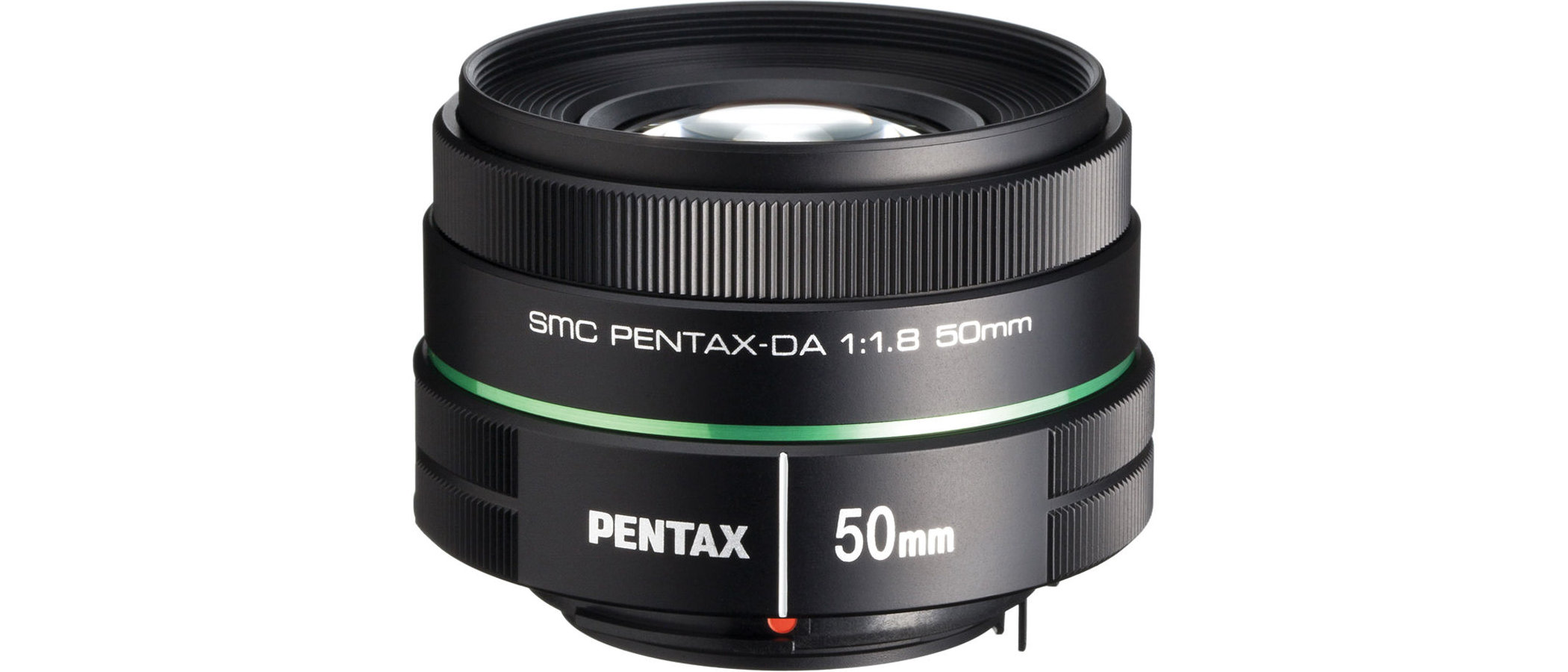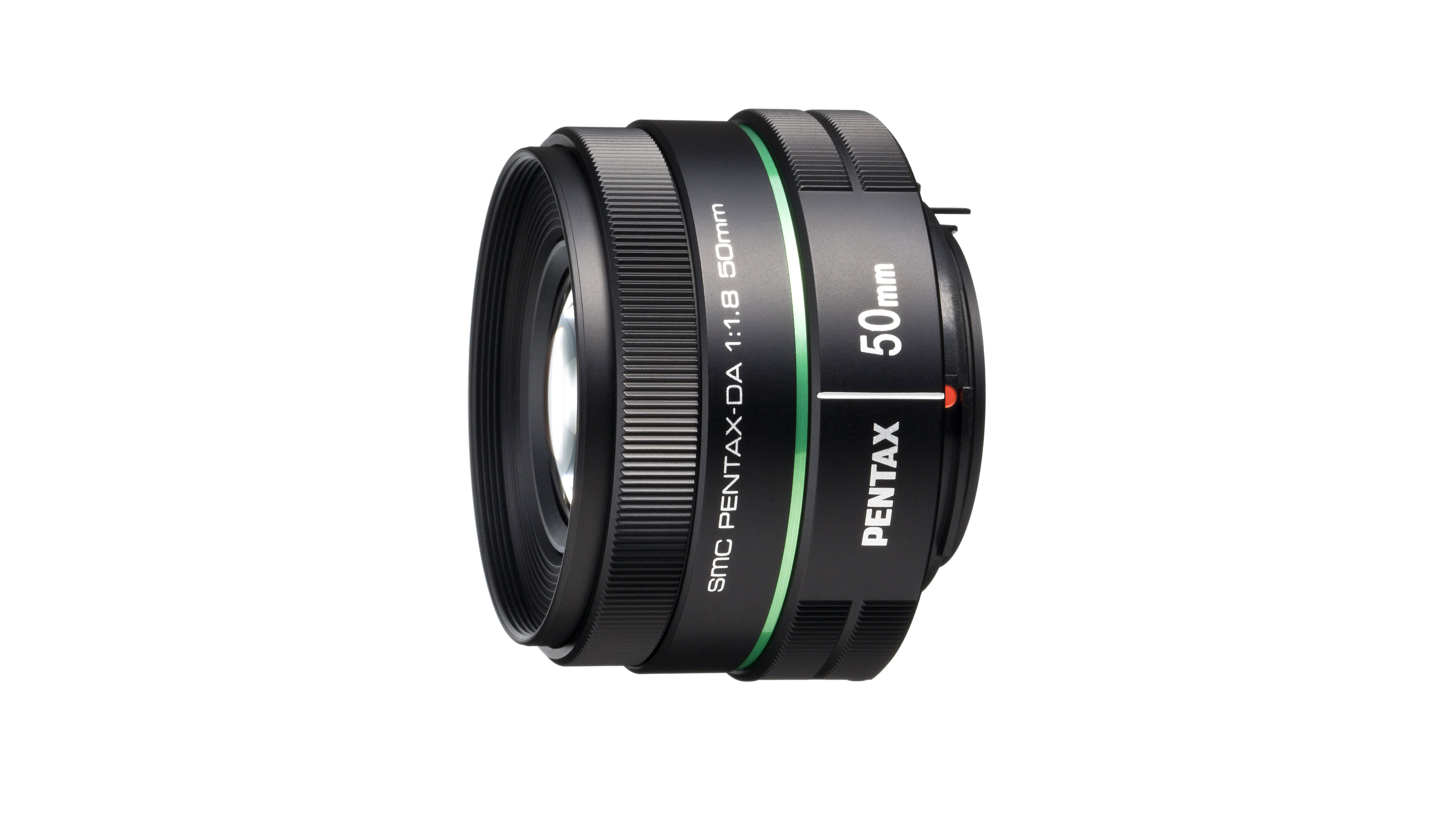Digital Camera World Verdict
So-called ‘portrait primes’ are often fairly big, heavy and expensive, but this Pentax lens is none of those things. At just 1.5 inches long and 122g in weight, it’s really compact and lightweight, yet still delivers a 76.5mm effective focal length with a fast f/1.8 aperture on Pentax APS-C format DSLRs for which it’s designed. It lacks an autofocus motor and is somewhat basic in some respects but that’s reflected in the refreshingly affordable purchase price.
Pros
- +
Effective 76.5mm focal length
- +
Compact and lightweight
- +
Inexpensive to buy
Cons
- -
Plastic mounting plate
- -
No built-in AF motor
- -
No hood
Why you can trust Digital Camera World
The APS-C format Pentax smc DA 50mm f/1.8 combines a 76.5mm effective focal length with a fast f/1.8 aperture rating, making it ideal for portraiture, still life photography and any time you simply need a short telephoto focal length with a fast aperture for freezing movement or attaining a tight depth of field.
Specifications
Mount: Pentax K (APS-C)
Full frame: No
Image stabilization: No
Autofocus: Yes
Lens construction: 6 elements in 5 groups
Angle of view: 31.5 degrees
Diaphragm blades: 7
Minimum aperture: f/22
Minimum focusing distance: 0.45m
Maximum magnification ratio: 0.15x
Filter size: 52mm
Dimensions: 64x38mm
Weight: 122g
Key features
When is a 50mm lens not a 50mm lens? Although it has the actual focal length of a typical ‘nifty fifty’, this Pentax is designed for the company’s APS-C format K-mount DSLRs, on which it effectively gives a short telephoto focal length of 76.5mm. It’s therefore ideal for portraiture, where the f/1.8 aperture enables a fairly tight depth of field for isolating the subject against a blurred background.
‘Key features’ are fairly few and far between, as reflected by the bargain-basement priced tag. The lens has a plastic mounting plate and isn’t supplied with a hood. There’s no built-in autofocus motor, the lens instead relying on a screw-drive linkage to the in-body AF motor of a host camera body. The optical path is based on just six elements, with no aspherical or ED (Extra-low Dispersion) glass advertised.
Handling benefits from the compact, lightweight build of the lens but again, as expected considering the price, there are no weather-seals. A plus point is that the lens features Pentax’s SP (Super Protect) coating on the front element, which repels moisture and grease and eases cleaning.
Performance
The camera-driven autofocus is fairly fast but very noisy compared with the vast majority of lenses on the market. Manual focusing is pretty smooth but there’s no focus distance scale. Levels of sharpness are very good in the f/4 to f/8 sector of the aperture range but drop off noticeably at each end. Shooting portraits at f/1.8, it’s questionable how much you want to draw attention to every flaw and blemish in a subject’s skin anyway. More importantly for this type of photography, bokeh is pleasantly smooth and soft.
Lab results
We run a range of lab tests under controlled conditions, using the Imatest Master testing suite. Photos of test charts are taken across the range of apertures and zooms (where available), then analyzed for sharpness, distortion and chromatic aberrations.
We use Imatest SFR (spatial frequency response) charts and analysis software to plot lens resolution at the center of the image frame, corners and mid-point distances, across the range of aperture settings and, with zoom lenses, at four different focal lengths. The tests also measure distortion and color fringing (chromatic aberration).
Sharpness:
Sharpness is best in the middle sector of the aperture range and the relative softness at f/1.8 can arguably be an advantage for portraiture.
Fringing:
Color fringing is fairly minimal even at the edges and corners of the frame at both ends of the aperture range, and is even less in the mid sector.
The best camera deals, reviews, product advice, and unmissable photography news, direct to your inbox!
Distortion: -0.54
There’s a slight touch of barrel distortion but not enough to generally be noticeable, and it’s easily corrected if necessary.
Verdict
So-called ‘portrait primes’ are often fairly big, heavy and expensive, but this Pentax lens is none of those things. At just 1.5 inches long and 122g in weight, it’s really compact and lightweight, yet still delivers a 76.5mm effective focal length with a fast f/1.8 aperture on Pentax APS-C format DSLRs for which it’s designed. It lacks an autofocus motor and is somewhat basic in some respects but that’s reflected in the refreshingly affordable purchase price.
Read more:
• Best Pentax lenses
• Best Pentax cameras
• Best camera lenses
• Best Canon lenses
• Best Nikon lenses
• Best Sony lenses
Matthew Richards is a photographer and journalist who has spent years using and reviewing all manner of photo gear. He is Digital Camera World's principal lens reviewer – and has tested more primes and zooms than most people have had hot dinners!
His expertise with equipment doesn’t end there, though. He is also an encyclopedia when it comes to all manner of cameras, camera holsters and bags, flashguns, tripods and heads, printers, papers and inks, and just about anything imaging-related.
In an earlier life he was a broadcast engineer at the BBC, as well as a former editor of PC Guide.






